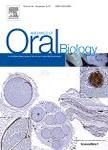版权所有:内蒙古大学图书馆 技术提供:维普资讯• 智图
内蒙古自治区呼和浩特市赛罕区大学西街235号 邮编: 010021

作者机构:Natl Cheng Kung Univ Coll Engn Dept Biomed Engn Tainan 701 Taiwan Natl Cheng Kung Univ Coll Med & Hosp Inst Oral Med Tainan 701 Taiwan Natl Cheng Kung Univ Coll Med & Hosp Dept Stomatol Tainan 701 Taiwan Nanyang Technol Univ Coll Engn Sch Mech & Aerosp Engn Singapore 639798 Singapore
出 版 物:《ARCHIVES OF ORAL BIOLOGY》 (口腔生物学文献集)
年 卷 期:2013年第58卷第6期
页 面:575-582页
核心收录:
主 题:Dentinal fluid flow Hydrodynamic theory Pulpal nerve stimulation Dental biomechanics Fluid-structure interaction
摘 要:Objectives: This study uses a fluid-structure interaction (FSI) simulation to evaluate the fluid flow in a dental intrapulpal chamber induced by the deformation of the tooth structure during loading in various directions. Methods: The FSI is used for the biomechanics simulation of dental intrapulpal responses with the force loading gradually increasing from 0 to 100 N at 0 degrees, 30 degrees, 45 degrees, 60 degrees, and 90 degrees on the tooth surface in 1 s, respectively. The effect of stress or deformation on tooth and fluid flow changes in the pulp chamber are evaluated. Results: A horizontal loading force on a tooth may induce tooth structure deformation, which increases fluid flow velocity in the coronal pulp. Thus, horizontal loading on a tooth may easily induce tooth pain. Conclusion: This study suggests that experiments to investigate the relationship between loading in various directions and dental pain should avoid measuring the bulk pulpal fluid flow from radicular pulp, but rather should measure the dentinal fluid flow in the dentinal tubules or coronal pulp. The FSI analysis used here could provide a powerful tool for investigating problems with coupled solid and fluid structures in dental biomechanics. (C) 2012 Elsevier Ltd. All rights reserved.